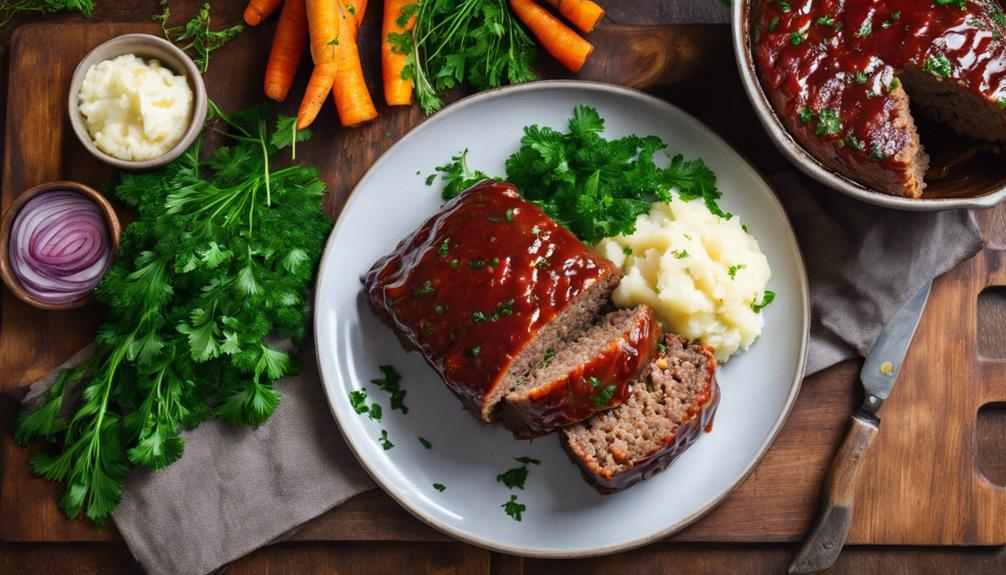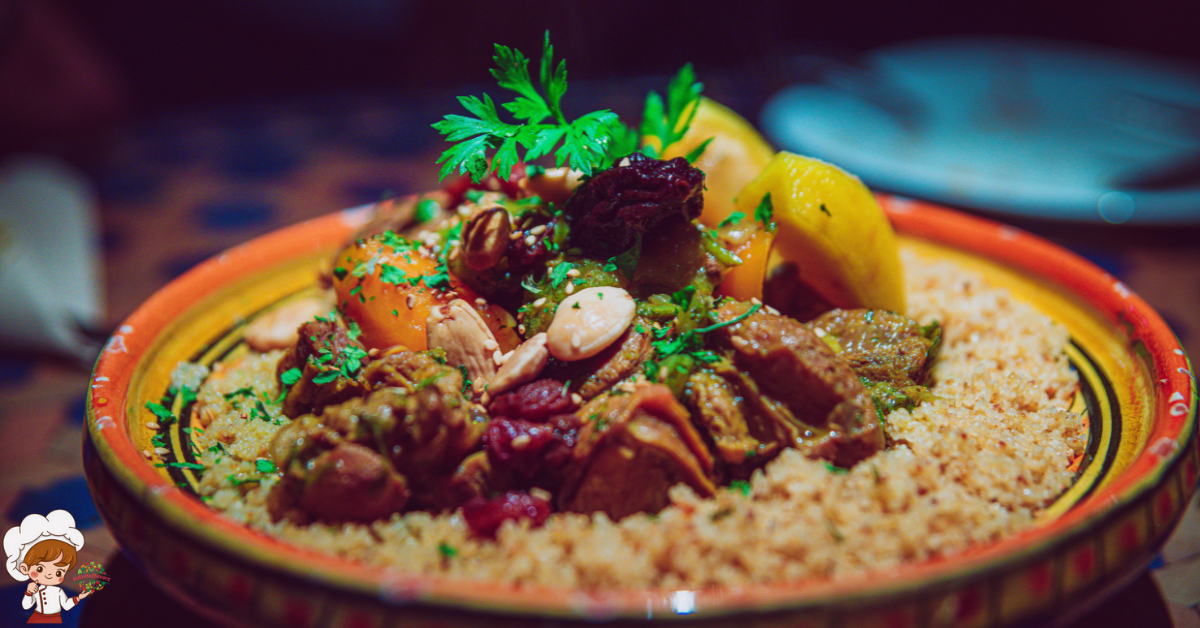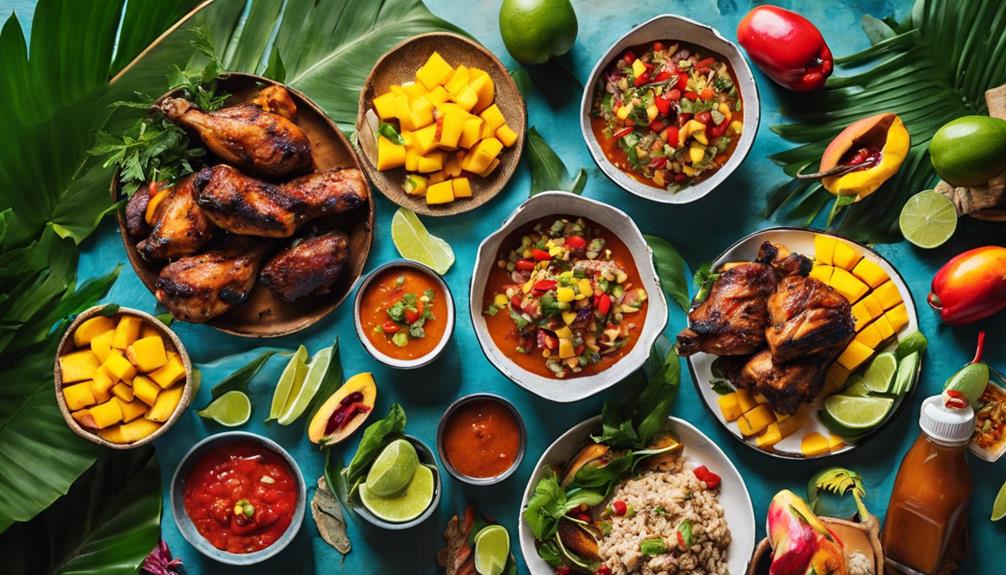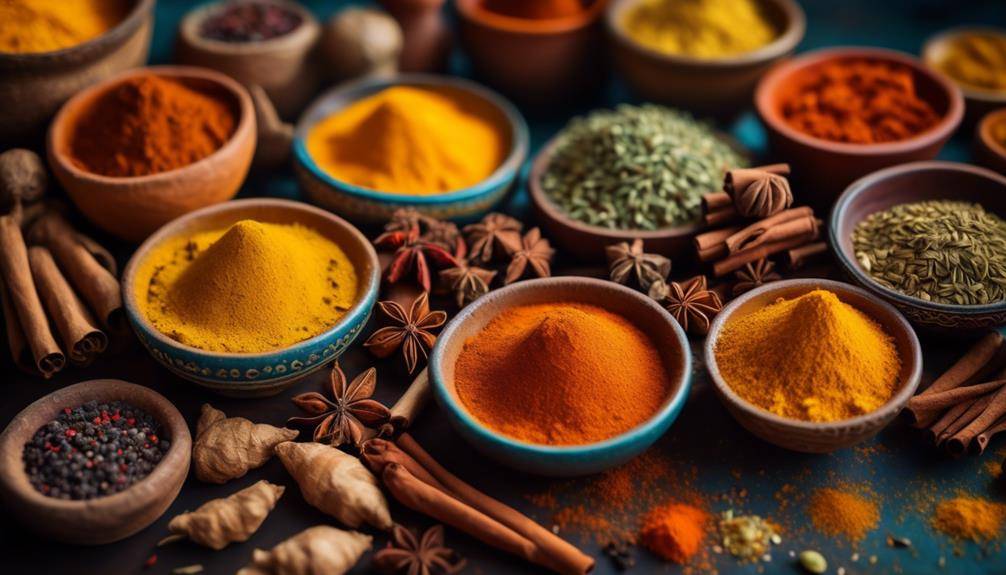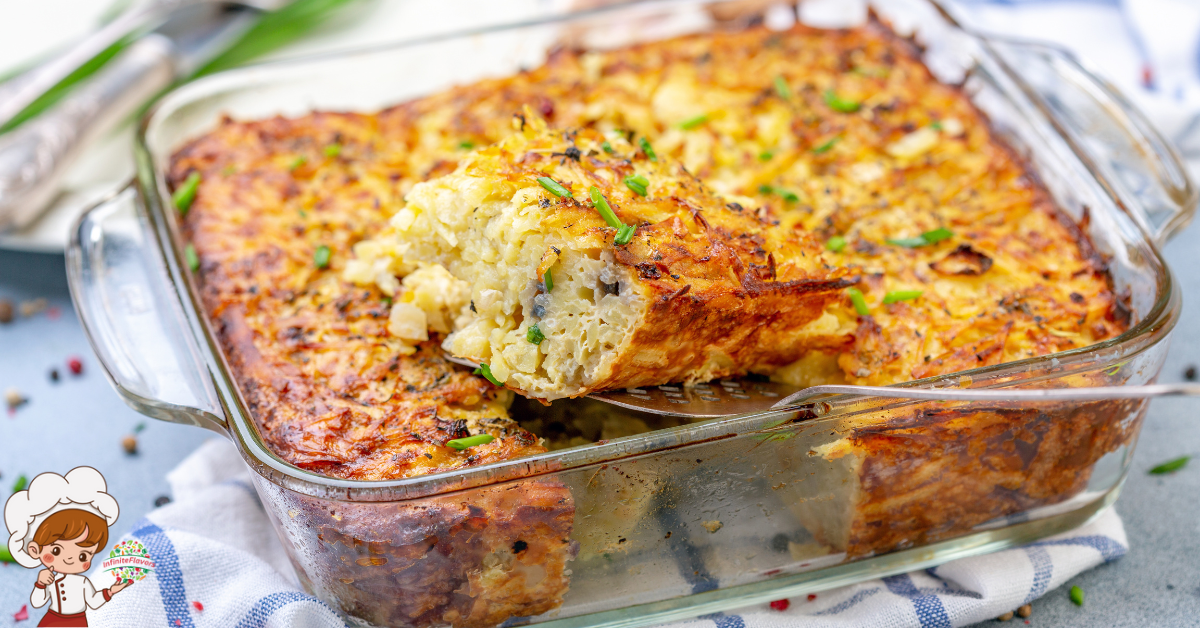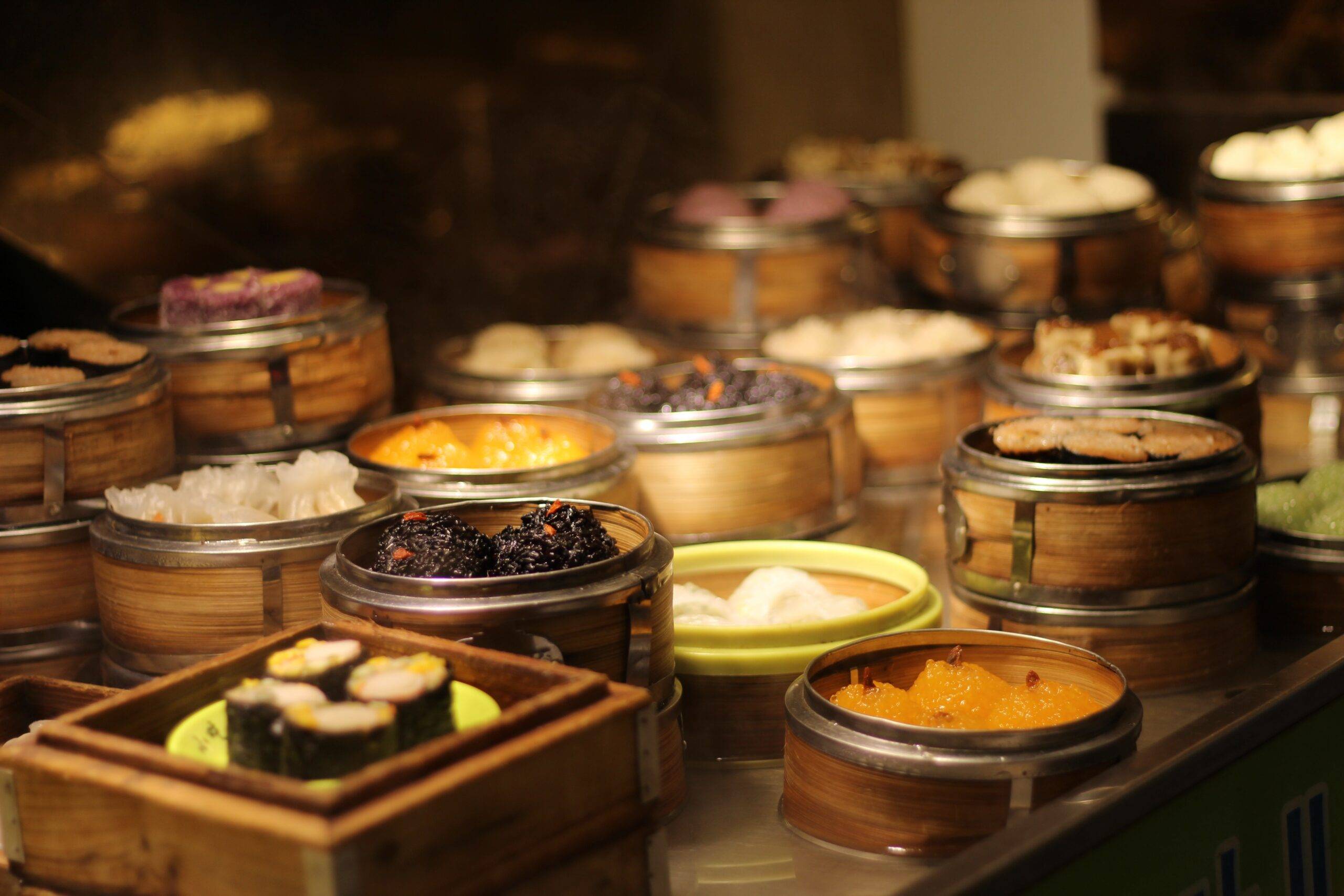The Best Spicy Cajun Jambalaya Recipe
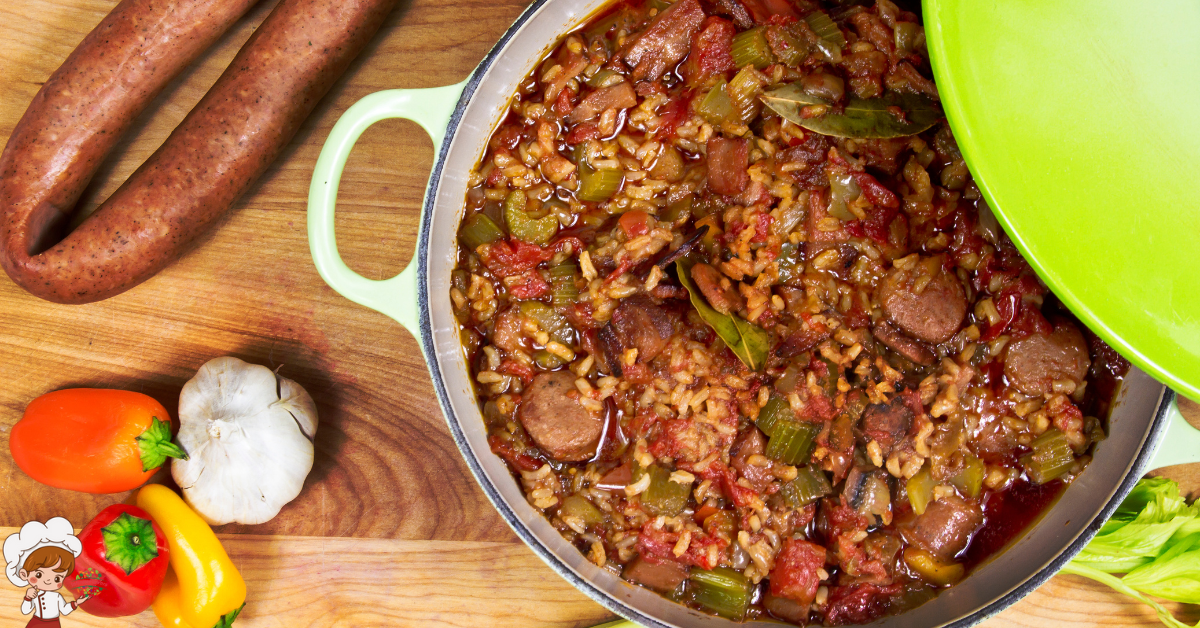
The Best Spicy Cajun Jambalaya Recipe; Craving a dish that’s bursting with bold flavors and tantalizing spices? Look no further than this Spicy Cajun Jambalaya recipe. Packed with a plethora of ingredients that promise to make your taste buds dance, this dish is sure to leave you wanting more.
From the aromatic Cajun seasoning blend to the succulent shrimp and savory sausage, each component is carefully crafted to create a symphony of flavors that will transport you straight to the heart of Louisiana. But that’s not all – the secret to the perfect jambalaya lies in the way it’s simmered, allowing the ingredients to meld together and create a harmonious blend of tastes. So, ready to embark on a culinary adventure? Let’s dive into the world of Spicy Cajun Jambalaya and discover a dish that’s sure to impress.
Ingredients for Spicy Cajun Jambalaya
To make a delicious and fiery Cajun jambalaya, gather all the ingredients listed below and get ready for a flavor-packed culinary adventure. The key to achieving the perfect level of spiciness in your jambalaya is the Cajun seasoning. However, if you don’t have Cajun seasoning on hand or prefer a milder flavor, there are alternatives you can use.
Cajun seasoning is a blend of spices that typically includes paprika, garlic powder, onion powder, cayenne pepper, and various herbs. It adds a robust and spicy flavor to the jambalaya. If you don’t have Cajun seasoning, you can create your own by combining equal parts of paprika, garlic powder, onion powder, cayenne pepper, dried thyme, dried oregano, and salt. This homemade Cajun seasoning will give your jambalaya the same fiery kick.
If you’re not a fan of spicy foods or want to adjust the spice level to your liking, there are a few things you can do. First, you can reduce or omit the amount of cayenne pepper or other spicy ingredients in the Cajun seasoning. You can also add more sweet or smoky spices like paprika or smoked paprika to balance out the heat. Another option is to serve the jambalaya with a dollop of sour cream or a squeeze of lime juice, as these can help cool down the spiciness.
Preparing the Cajun Seasoning Blend
To prepare the Cajun seasoning blend for your jambalaya, gather all the necessary spices and get ready to create a flavorful and fiery combination. Cajun seasoning is a key component of this classic Louisiana dish, adding a punch of flavor and heat. While you can easily find pre-made Cajun seasoning in stores, making your own blend allows you to customize the flavor and adjust the spice level to your preference.
The traditional Cajun seasoning blend typically includes a combination of paprika, cayenne pepper, garlic powder, onion powder, dried thyme, dried oregano, and black pepper. However, feel free to experiment with different spices and herbs to create your own unique blend. If you prefer a milder flavor, you can reduce the amount of cayenne pepper or omit it altogether. On the other hand, if you want to turn up the heat, you can increase the amount of cayenne pepper or even add some crushed red pepper flakes.
If you don’t have all the necessary spices on hand, there are a few Cajun seasoning alternatives you can use. For example, you can substitute chili powder for paprika, or use a combination of chili powder, cumin, and cayenne pepper for a smoky and spicy flavor. Just remember to adjust the quantities accordingly to maintain the right balance of flavors.
Once you have gathered all the spices you need, simply combine them in a bowl and mix well. Store the Cajun seasoning blend in an airtight container, and it will be ready to use whenever you want to add a taste of the Louisiana bayou to your jambalaya or any other dish.
Sautéing the Vegetables for Flavor
Now it’s time to sauté the vegetables to add depth and flavor to your Cajun jambalaya. Choosing the right vegetables is crucial, as they will contribute their unique tastes and textures to the dish. Make sure to chop them properly, using the right technique to ensure even cooking. Lastly, pay attention to the sautéing temperature, as too high heat can burn the vegetables and ruin the dish, while too low heat can result in soggy vegetables.
Vegetable Selection
For enhanced flavor in your Cajun Jambalaya, begin by sautéing a carefully selected combination of vegetables. The right vegetable types and cooking methods can take your dish to a whole new level of deliciousness. Here are some options to consider:
- Bell peppers: Their vibrant colors and sweet taste add depth to the dish.
- Onions: Whether you prefer yellow, white, or red onions, they provide a savory base for the jambalaya.
- Celery: This crunchy vegetable brings a refreshing and slightly bitter flavor to balance out the spices.
- Garlic: A must-have ingredient that adds a rich, pungent taste to the jambalaya.
To sauté these vegetables, start by heating oil in a large skillet over medium heat. Add the vegetables and cook until they become tender and slightly caramelized, releasing their aromatic flavors. This step will infuse your jambalaya with a tantalizing taste that will leave you craving more.
Proper Chopping Technique
Enhance the flavor of your Cajun Jambalaya by mastering the proper chopping technique when sautéing the vegetables for a burst of deliciousness in every bite. Knife skills and cutting techniques play a crucial role in achieving the perfect texture and flavor profile for your jambalaya.
Start by choosing a sharp chef’s knife that allows you to make precise cuts. For onions, peel off the skin and cut them in half lengthwise. Make even slices, holding the onion halves together with your fingers. Next, chop the slices into small, evenly sized pieces. For bell peppers, remove the stem and seeds, then cut the pepper into strips. Stack the strips and dice them into small squares. Remember to keep your fingers curved and tucked away from the blade for safety. Mastering the proper chopping technique will ensure that your vegetables cook evenly and release their full flavor into the jambalaya.
Sautéing Temperature
To achieve maximum flavor in your Cajun Jambalaya, it is important to sauté the vegetables at the right temperature. Sautéing is a cooking technique that involves quickly cooking food in a small amount of oil or fat over high heat. Proper heat control is crucial to ensure that the vegetables are cooked evenly and retain their natural flavors. Here are four sautéing techniques to help you achieve the perfect temperature:
- Preheat the pan: Before adding the vegetables, make sure to preheat the pan over medium-high heat. This will help to evenly distribute the heat and prevent the vegetables from sticking.
- Use the right amount of oil: Use just enough oil to coat the bottom of the pan. This will prevent the vegetables from becoming greasy and help them cook evenly.
- Maintain a consistent heat: Once the vegetables are added, maintain a consistent heat by adjusting the burner temperature as needed. This will ensure that the vegetables are cooked to perfection without burning.
- Stir frequently: To prevent the vegetables from sticking and burning, stir them frequently while sautéing. This will help distribute the heat evenly and ensure that all sides of the vegetables are cooked.
Adding the Sausage and Shrimp for Protein
Now it’s time to amp up the protein in your Cajun Jambalaya by adding some delicious sausage and shrimp. These two ingredients not only add a hearty and savory flavor, but they also provide a good amount of protein to make this dish more satisfying and nutritious. Cooking the sausage and shrimp together with the other ingredients will infuse the jambalaya with their flavors, creating a mouthwatering dish that will leave you craving for more.
Protein Sources for Jambalaya
For a flavorful and protein-packed Cajun jambalaya, include delicious sausage and succulent shrimp in your recipe. These protein sources will not only add a rich and savory taste to your dish but also provide essential nutrients. If you’re looking for plant-based alternatives, you can substitute the sausage with tofu or tempeh, marinated in Cajun spices to infuse the flavors.
Another great option is using plant-based sausage made from ingredients like soy or seitan. As for seafood options, you can use a combination of shrimp and crab meat for a delectable seafood twist. The sweetness of the shrimp and the brininess of the crab will complement the spicy Cajun flavors perfectly. So go ahead and add these protein sources to take your jambalaya to the next level!
Cooking Sausage and Shrimp
As you move on to the next step of preparing your Cajun jambalaya, it’s time to infuse your dish with the irresistible flavors of cooking sausage and shrimp. The combination of these two ingredients will add a delicious depth of flavor to your jambalaya. When cooking sausage for your jambalaya, you can choose from a variety of types such as spicy andouille or smoky kielbasa, both of which pair perfectly with the bold Cajun spices. To cook the sausage, simply slice it into bite-sized pieces and brown them in a hot skillet until they are nicely caramelized.
Once the sausage is cooked, set it aside and move on to the shrimp. The shrimp can be cooked in the same skillet, using the residual flavors from the sausage. Sauté the shrimp until they turn pink and opaque, ensuring not to overcook them as they can become tough. Once the shrimp is cooked, add it to the cooked sausage and set it aside until it’s time to incorporate them into the jambalaya.
Incorporating the Rice and Liquid Ingredients
To incorporate the rice and liquid ingredients into your Cajun Jambalaya, you’ll need to follow these simple steps:
- Choose the right rice: Jambalaya is traditionally made with long-grain rice, such as white or brown rice. However, you can also use other varieties like jasmine or basmati rice for a different flavor profile.
- Prepare the rice: Before adding it to the jambalaya, rinse the rice under cold water to remove any excess starch. This will help prevent the rice from becoming sticky when cooked.
- Decide on your liquid ingredients: Jambalaya typically requires a combination of broth and canned tomatoes, which add depth and richness to the dish. You can use chicken, beef, or vegetable broth depending on your preference. Additionally, you can experiment with different types of canned tomatoes, such as diced tomatoes or crushed tomatoes, to vary the texture and flavor.
- Add the liquid ingredients: Once you’ve chosen your liquid ingredients, it’s time to incorporate them into the jambalaya. Start by pouring the broth into the pot, followed by the canned tomatoes. Stir everything together until well combined.
Simmering and Allowing the Flavors to Meld
Now that you have incorporated the rice and liquid ingredients into your Cajun Jambalaya, it’s time to let the flavors meld as the dish simmers on the stove. Simmering is a gentle cooking technique that allows the ingredients to slowly cook together, creating a harmonious blend of flavors. It is during this time that the magic happens, as the heat works its way through the ingredients, infusing them with the essence of the spices and seasonings.
To simmer your jambalaya to perfection, start by adjusting the heat to a low setting. You don’t want the dish to boil vigorously, as this can cause the rice to become mushy and the flavors to lose their intensity. Instead, aim for a gentle simmer, where small bubbles rise to the surface occasionally.
As the jambalaya simmers, the flavors will begin to meld together, creating a rich and complex taste. The liquid ingredients, such as the broth and tomatoes, will slowly reduce, concentrating their flavors and creating a thicker sauce. The rice will absorb the delicious broth, becoming tender and infused with the Cajun spices.
During the simmering process, it’s important to give the jambalaya occasional stirs. This helps to distribute the flavors evenly and prevents the rice from sticking to the bottom of the pot. Be gentle when stirring, so as not to break up the rice grains.
After simmering for about 20-25 minutes, your Cajun Jambalaya will be ready to be served. The flavors will have melded together beautifully, resulting in a dish that is bursting with spicy, smoky, and savory flavors. So, sit back, relax, and enjoy the delicious fruits of your simmering techniques and flavor infusion.
Serving and Garnishing the Jambalaya
When serving and garnishing your Cajun Jambalaya, you can add a touch of freshness and visual appeal to the dish. Here are some serving tips and decorative garnishes to elevate your jambalaya:
- Serve in a Cast Iron Skillet: Present your jambalaya in a rustic and authentic way by serving it directly in a cast iron skillet. Not only does it add a charming touch to your presentation, but it also keeps the dish warm throughout the meal.
- Garnish with Fresh Herbs: Sprinkle some chopped fresh herbs, such as parsley or cilantro, over the jambalaya just before serving. The vibrant green color will contrast beautifully with the rich and spicy flavors of the dish, adding a burst of freshness.
- Add a Squeeze of Citrus: For an extra touch of tanginess, squeeze some lemon or lime juice over the jambalaya before serving. The citrusy flavor will help brighten up the dish and balance out the heat from the Cajun spices.
- Top with Colorful Bell Peppers: Enhance the visual appeal of your jambalaya by garnishing it with slices of colorful bell peppers. The red, yellow, and green peppers not only add a pop of vibrant colors but also provide a crisp and sweet contrast to the savory jambalaya.
Tips for Storing and Reheating Leftovers
For optimal enjoyment of your Cajun Jambalaya leftovers, here are some helpful tips for storing and reheating them. Storing leftovers properly is crucial to maintain their freshness and flavor. Once your jambalaya has cooled down, transfer it into an airtight container or wrap it tightly with plastic wrap. Make sure to remove any excess air to prevent freezer burn. Label the container with the date to keep track of its freshness. It is recommended to consume the leftovers within 3-4 days to ensure their quality.
When it comes to reheating, there are a few options depending on your preference. The most common method is using the microwave. Simply transfer a portion of the jambalaya onto a microwave-safe dish, cover it with a microwave-safe lid or microwave-safe plastic wrap, and heat it on medium-high power for 2-3 minutes. Stir the jambalaya halfway through to ensure even heating. If you prefer a crispy texture, using a skillet or frying pan is a great option. Heat a small amount of oil or butter in the skillet, add the jambalaya, and cook it over medium heat until it is heated through. Remember to stir occasionally to prevent sticking.
Another option is to reheat the jambalaya in the oven. Preheat the oven to 350°F (175°C) and transfer the jambalaya into an oven-safe dish. Cover the dish with aluminum foil and bake it for about 15-20 minutes or until it is heated thoroughly. This method is great for larger portions or if you want to reheat the entire batch.
Now that you know how to store and reheat your Cajun Jambalaya leftovers, you can enjoy this delicious dish even after it’s been made. So, don’t let any leftovers go to waste and savor the flavors of your jambalaya for days to come.
Spicy Cajun Jambalaya Recipe; Frequently Asked Questions
How Long Does It Take to Prepare the Spicy Cajun Jambalaya Recipe?
You can make the spicy Cajun jambalaya recipe in under 30 minutes by following these tips. Speed up preparation by using pre-cooked ingredients and chopping everything beforehand.
Can I Substitute the Sausage With Chicken or Any Other Meat?
Yes, you can substitute the sausage in the jambalaya recipe with chicken or any other meat of your choice. Additionally, if you prefer vegetarian alternatives, you can use tofu or a variety of vegetables to add flavor and texture to your dish.
Is It Possible to Make a Vegetarian Version of This Jambalaya Recipe?
Yes, it is possible to make a vegan version of this jambalaya recipe. Instead of sausage, you can use alternative protein options like tofu, tempeh, or plant-based sausages. These will add flavor and texture to your vegetarian jambalaya.
Can I Use Long Grain Rice Instead of the Recommended Rice Type?
Sure, you can use long grain rice instead of the recommended rice type in the recipe. It may slightly alter the texture, but it should still work well. Feel free to experiment and find what you prefer!
What Are Some Common Side Dishes That Go Well With Spicy Cajun Jambalaya?
Looking for some popular side dishes to serve with spicy Cajun jambalaya? How about cornbread, collard greens, or a fresh green salad? These options complement the flavors and add a delicious balance to your meal. Enjoy!
Conclusion
In just a few simple steps, you can create a delicious and spicy Cajun jambalaya that is sure to impress. The combination of flavors from the Cajun seasoning, sausage, shrimp, and vegetables creates a dish that is both hearty and satisfying. Don’t forget to garnish with fresh herbs and serve with a side of crusty bread for the perfect meal. This jambalaya is so tasty, you’ll be craving it again and again!



